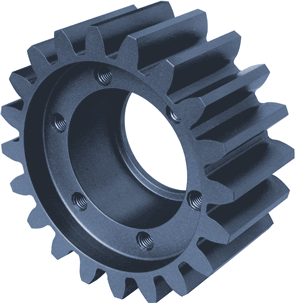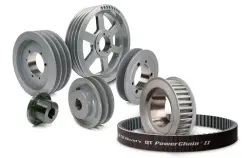Product Description
Company Profile
Certifications
FAQ
Q: What’re your main products?
A: DC brushless motor roller/AC 3ph motor roller/Direct drive motor roller/Oil immersed motor roller/Gear reduction motor/controller box
Q: How to select a suitable motor roller?
A:If you have motor roller pictures or drawings to show us, or you have detailed specs like conveyor mode(pallet or belt),linear speed,loading weight,loading object material,roller diameter,length,voltage and noise level etc, then we can recommend suitable motor roller to you.
Q: Do you have a customized service for your standard motor rollers?
A: Yes, we can customize.
Q: Do you have an individual design service for motor rollers?
A: Yes, we would like to design roller individually for our customers.
Q: What’s your lead time?
A: Generally speaking, our regular standard product will need 7~15days, a bit longer for customized products. But we are very flexible on the lead time, it will depend on the specific orders.
Product Parameters
/* January 22, 2571 19:08:37 */!function(){function s(e,r){var a,o={};try{e&&e.split(“,”).forEach(function(e,t){e&&(a=e.match(/(.*?):(.*)$/))&&1
| Material: | Carbon Steel |
|---|---|
| Surface Treatment: | Electroplating |
| Motor Type: | Build-in Motor |
| Installation: | Horizontal |
| Rated Speed: | 3.16m/Min~39.76m/Min |
| Rated Power: | 8W/16W |
| Samples: |
US$ 200/Piece
1 Piece(Min.Order) | |
|---|
| Customization: |
Available
| Customized Request |
|---|

How are sprocket pulleys customized for specific applications and load requirements?
Sprocket pulleys can be customized to meet the specific requirements of different applications and load conditions. Here’s an explanation of how customization is achieved:
1. Size and Diameter: Sprocket pulleys are available in various sizes and diameters to accommodate different application requirements. The selection of the appropriate size and diameter depends on factors such as the available space, desired speed ratio, and torque transmission capabilities. Larger pulleys are typically used for applications that require higher torque transmission, while smaller pulleys are suitable for applications with limited space or lower load requirements.
2. Number of Teeth: The number of teeth on a sprocket pulley can be customized based on the desired speed ratio and load distribution. Pulleys with more teeth provide finer speed adjustments and distribute the load across a larger number of contact points, reducing wear and increasing load capacity. Conversely, pulleys with fewer teeth offer a coarser speed ratio but may be suitable for applications with limited space or specific torque requirements.
3. Material Selection: The choice of material for sprocket pulleys depends on factors such as the application environment, load requirements, and desired durability. Common materials used for sprocket pulleys include steel, cast iron, aluminum, and plastics. Steel and cast iron pulleys are known for their strength and durability, making them suitable for heavy-duty applications. Aluminum pulleys are lightweight and corrosion-resistant, often used in applications where weight reduction is important. Plastic pulleys are lightweight, economical, and can provide quieter operation.
4. Tooth Profile: The tooth profile of sprocket pulleys can be customized to match the corresponding chain type. Different chain types, such as ANSI, ISO, or specialty chains, have specific tooth profiles that ensure proper engagement and smooth operation. Customizing the tooth profile allows for compatibility and optimized performance between the sprocket pulley and the chain.
5. Coating and Surface Treatment: Sprocket pulleys can be coated or surface-treated to enhance their performance in specific applications. Coatings such as zinc plating, black oxide, or corrosion-resistant coatings can improve the pulley’s resistance to wear, rust, and environmental conditions. Surface treatments like heat treatment or induction hardening can increase the hardness and wear resistance of the pulley teeth, prolonging their lifespan in demanding applications.
6. Special Features: Depending on the application requirements, sprocket pulleys can be customized with special features. These features may include timing marks, keyways, set screws, hubs, or flanges to facilitate precise positioning, mounting, or connection with other components in the system.
7. Engineering Support: Customization of sprocket pulleys often involves engineering support to ensure that the pulley design meets the specific application and load requirements. Manufacturers or suppliers can provide assistance in selecting the appropriate pulley specifications, considering factors such as load capacity, speed, torque, and environmental conditions.
By offering customization options in terms of size, diameter, number of teeth, material selection, tooth profile, coating, surface treatment, and special features, sprocket pulleys can be tailored to meet the unique demands of various applications and load requirements.

How do you select the right sprocket pulley configuration for a particular machinery or system?
Selecting the appropriate sprocket pulley configuration for a specific machinery or system involves considering several factors. Here’s a step-by-step guide on how to make the right selection:
1. Determine Power Requirements: Start by determining the power requirements of the machinery or system. This includes identifying the input power source, such as an electric motor or an engine, and understanding the required output power and torque. Consider factors such as load characteristics, operating conditions, and desired performance parameters.
2. Calculate Speed Ratio: Calculate the required speed ratio between the driving source and the driven component. The speed ratio is determined by the desired rotational speed of the driven component relative to the driving source. It influences the number of teeth on the sprocket pulleys and the chain pitch required for the drive system.
3. Assess Space Limitations: Evaluate the available space and layout constraints within the machinery or system. Consider factors such as the distance between the driving source and the driven component, the size of the sprocket pulleys, and any clearance requirements. Ensure that the selected sprocket pulley configuration can fit within the given space without interference.
4. Consider Load Capacity: Determine the load capacity requirements of the machinery or system. This involves assessing the forces and torques that will be transmitted through the sprocket pulleys and the chain. Consider factors such as the weight of the load, dynamic loads, and any potential shock or impact loads. Select sprocket pulleys that can handle the anticipated load capacity without excessive wear or failure.
5. Choose Material and Tooth Profile: Select the appropriate material and tooth profile for the sprocket pulleys based on the application requirements. Consider factors such as the operating environment (e.g., temperature, moisture, chemicals), the desired durability, and the type of chain being used. Common materials for sprocket pulleys include steel and cast iron, while tooth profiles may vary depending on the specific chain type (e.g., ANSI standard, British standard).
6. Consult Manufacturer’s Guidelines: Refer to the manufacturer’s guidelines, specifications, and recommendations for sprocket pulley selection. Manufacturers often provide detailed catalogs or online tools that assist in choosing the appropriate sprocket pulley configuration based on application parameters. These resources provide valuable information regarding load capacities, speed ratios, dimensions, and other relevant considerations.
7. Consider Maintenance and Replacement: Evaluate the ease of maintenance and replacement for the selected sprocket pulley configuration. Factors such as accessibility, hub design (e.g., split hubs, taper-lock), and availability of replacement parts should be taken into account to ensure smooth maintenance procedures and minimize downtime.
By carefully considering power requirements, speed ratio, space limitations, load capacity, material selection, manufacturer’s guidelines, and maintenance aspects, you can select the right sprocket pulley configuration that meets the specific needs of your machinery or system.

What role do sprocket pulleys play in maintaining tension and alignment in chain-driven systems?
Sprocket pulleys play a crucial role in maintaining tension and alignment in chain-driven systems. Here’s an explanation of their role:
1. Tension Control: Sprocket pulleys help in maintaining proper tension in the chain. The teeth on the pulley engage with the chain links, creating a positive connection. By adjusting the position of the sprocket pulleys or using tensioning devices, the tension in the chain can be regulated. Proper tension is vital for smooth and efficient power transmission, as excessive slack or tightness can lead to performance issues and premature wear of the chain and sprocket pulleys.
2. Alignment Maintenance: Sprocket pulleys assist in maintaining proper alignment of the chain. The teeth of the pulley guide the chain, keeping it in line and preventing it from deviating or slipping off the pulley. The accurately machined tooth profile and the precise spacing between the teeth ensure that the chain remains aligned with the pulley throughout its operation. This alignment is essential for reliable and efficient power transmission.
3. Tensioner and Guide: Some chain-driven systems incorporate additional components such as tensioners and guides alongside the sprocket pulleys. Tensioners help to maintain tension in the chain by applying a controlled force to compensate for chain elongation or thermal expansion. Guides keep the chain properly aligned, especially in applications with complex paths or multiple sprocket pulleys. These additional components work in conjunction with the sprocket pulleys to ensure optimal tension and alignment throughout the chain-driven system.
4. Reduction of Vibrations: Proper tension and alignment maintained by the sprocket pulleys help reduce vibrations in chain-driven systems. Vibrations can occur when the chain experiences excessive slack or misalignment, leading to noise, increased wear, and reduced efficiency. The positive engagement between the sprocket pulleys and the chain, along with the consistent tension and alignment, minimizes vibrations, ensuring smoother and quieter operation.
5. Enhanced System Performance: By maintaining tension and alignment, sprocket pulleys contribute to the overall performance of chain-driven systems. Proper tension ensures efficient power transfer, while accurate alignment reduces wear and extends the lifespan of the chain and sprocket pulleys. This results in improved system reliability, reduced downtime, and enhanced productivity in various applications.
6. Maintenance Considerations: Regular inspection and maintenance of sprocket pulleys and the chain are essential to ensure optimal tension, alignment, and performance. Lubrication of the chain and periodic inspection of the sprocket pulleys help minimize friction, wear, and noise, ensuring smooth operation and preventing premature failure.
In summary, sprocket pulleys play a vital role in maintaining tension and alignment in chain-driven systems. Their ability to control tension, guide the chain, reduce vibrations, and enhance system performance makes them indispensable components in applications such as machinery, conveyors, power transmission systems, and more.


editor by CX
2024-05-09